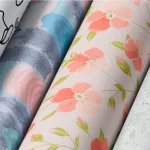How To Improve Sales With Display Visual Merchandising
Visual merchandising is a powerful tool for driving sales, as it directly impacts how customers perceive and interact with your products. A well-executed display can engage customers, highlight key items, and create an inviting shopping experience. Here are some key strategies to improve sales through display visual merchandising.
Create an inviting atmosphere:
The first step in improving sales with visual merchandising is to create an environment that draws customers in. The layout and design of your displays should be welcoming and easy to steer. Use lighting, colors, and signage effectively to create a warm, inviting atmosphere that encourages customers to linger and explore. The more appealing and accessible your store looks, the more likely customers are to make a purchase.
Use focal points to highlight key products:
One of the most effective ways to boost sales through visual merchandising is by strategically placing key products at focal points. These high-traffic areas, such as windows, entrance displays, or end-of-aisle spots, should feature your best-selling or seasonal items. By drawing attention to these products, you can increase the likelihood of them being noticed and purchased. Create eye-catching displays that make the product the centre of attention through the use of bold colors, interesting props, or creative signage.
Tell a story with your displays:
Effective visual merchandising should go beyond simply arranging products in an orderly manner. It should tell a story that resonates with customers and creates an emotional connection. For example, if you’re selling clothing, consider displaying outfits that reflect a lifestyle or season, like a “beach day” or “cozy winter evening” theme. Using props, mannequins, and background elements to bring the story to life will attract attention and also make the products more relatable, increasing the likelihood of a purchase.
Group products to encourage upselling:
Another effective merchandising tactic is grouping related products together. This encourages cross-selling and upselling by making it easy for customers to find complementary items. For example, in a beauty store, place skincare products next to makeup items or fragrance near body lotions. When customers see related products together, they’re more likely to purchase additional items they hadn’t initially planned on. Use clear signage to guide customers through the display and highlight discounts or special offers.




